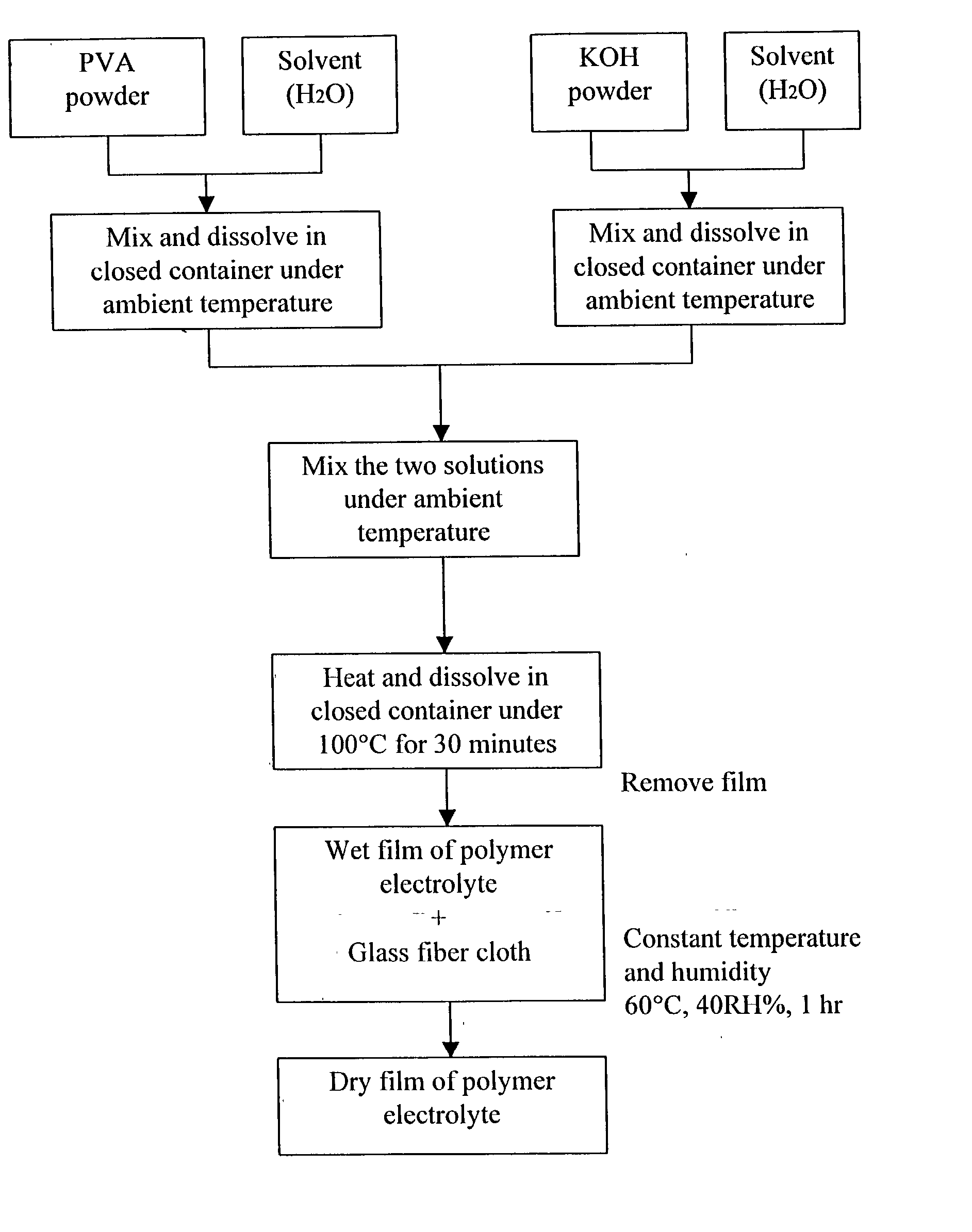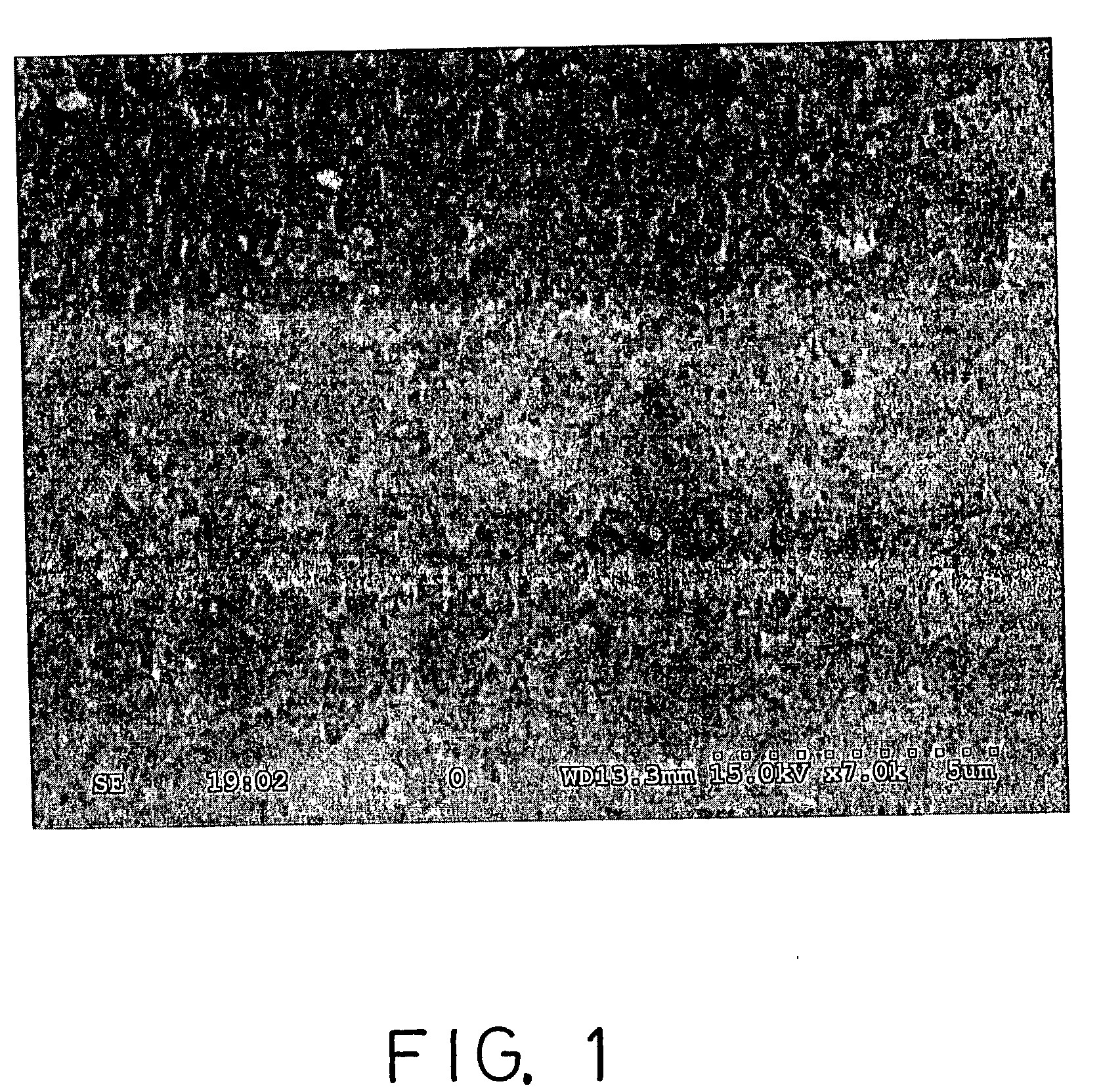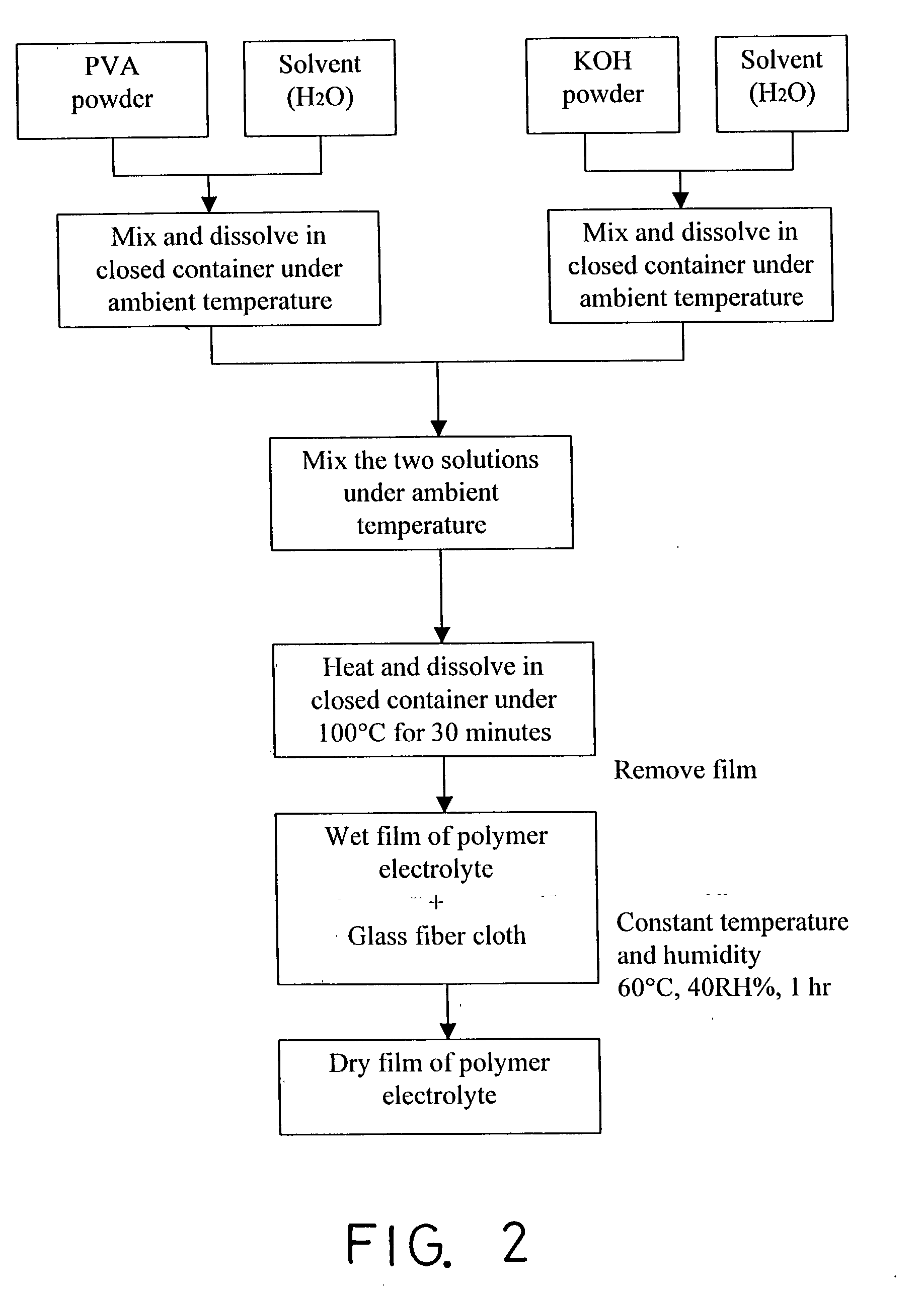Method for preparing solid-state polymer zinc-air battery
a solid-state polymer and zinc-air technology, applied in the direction of non-aqueous electrolyte cells, cell components, electrochemical generators, etc., can solve the problems of low conversion rate, energy development facing tremendous challenges, and the energy system we built up in the 20th century cannot meet the requirements of high-efficiency, clean, economical and safe energy system for the future, etc., to achieve greater power, large surface area, and greater discharge rate
- Summary
- Abstract
- Description
- Claims
- Application Information
AI Technical Summary
Benefits of technology
Problems solved by technology
Method used
Image
Examples
embodiment 1
[0120] Embodiment 1 Synthesis of PVA-GF Solid-State Alkaline Polymer Electrolyte
[0121] Weigh accurately 8.0 g of polyvinyl alcohol (PVA) and 40 g of water and place them into reactor. Measure the weight of reactor with PVA, water and agitator in it and record it. Agitate for one hour under ambient temperature until PVA is completely dissolved. Dissolve 12.5 g of potassium hydroxide (KOH) in 10 g of water and then pour it into the reactor. Raise the reactor temperature to 70.degree. C. and control the polymerization time to under 30 min. Measure the weight of reactor with resulting polymer inside and record it, and spread viscous polymer of specific weight (about 5.about.10 g polymer solution) on glass fiber (GF) and place it in temperature / humidity chamber (control the humidity at 40 RH % and temperature at 60.degree. C.) for one hour. After that, take it out and leave it in atmosphere for 30 min to one hour. Remove the alkaline polymer film and weigh it to calculate its chemical co...
embodiment 2
[0124] Embodiment 2 Preparation of Dendritic Zinc Powder
[0125] Select nickel plate as negative and positive plates and dissolve 7 wt % of ZnO in 8M KOH aqueous solution. Carry out electroplating for one hour under different temperature (30.degree. C., 50.degree. C., 70.degree. C.) and at different current densities (50 mA / cm.sup.2, 100 mA / cm.sup.2, 200 mA / cm.sup.2, and 250 mA / cm.sup.2). Post-electroplating treatment of dendritic zinc powder is a highly important process; scrap electroplated zinc powder off from the negative plate and wash it with ultra-pure D.I. water, vibrate with ultrasound device for 30 min and filter, then repeat the washing until the zinc powder is thoroughly cleansed off residual electrolyte. After the zinc powder is dried, seal it with zipper bag and place it in oven to prevent the oxidation of zinc.
[0126] FIG. 19 is the graph of plating potential vs. time at constant current. It is learned that the higher the current density, the greater drop of potential, t...
embodiment 3
[0127] Embodiment 3 Preparation of Zinc Gel Anode
[0128] Weigh 1% In(Ac).sub.3 inhibitor and add in 7M KOH solution. Agitate the solution to let the inhibitor distribute evenly. Mix 20 wt % dendritic zinc powder, 80 wt % molten zinc alloy powder into the gel just prepared. Vibrate the aforesaid solution in ultrasonic device for one hour. Add in proper amount of poly-acrylic polymer gelling agent (e.g. CMC, PVA, and capabol) and agitate evenly to obtain highly viscous gel. This completes the preparation of zinc gel anode.
PUM
| Property | Measurement | Unit |
|---|---|---|
| thickness | aaaaa | aaaaa |
| RH | aaaaa | aaaaa |
| temperature | aaaaa | aaaaa |
Abstract
Description
Claims
Application Information
 Login to View More
Login to View More - R&D
- Intellectual Property
- Life Sciences
- Materials
- Tech Scout
- Unparalleled Data Quality
- Higher Quality Content
- 60% Fewer Hallucinations
Browse by: Latest US Patents, China's latest patents, Technical Efficacy Thesaurus, Application Domain, Technology Topic, Popular Technical Reports.
© 2025 PatSnap. All rights reserved.Legal|Privacy policy|Modern Slavery Act Transparency Statement|Sitemap|About US| Contact US: help@patsnap.com



